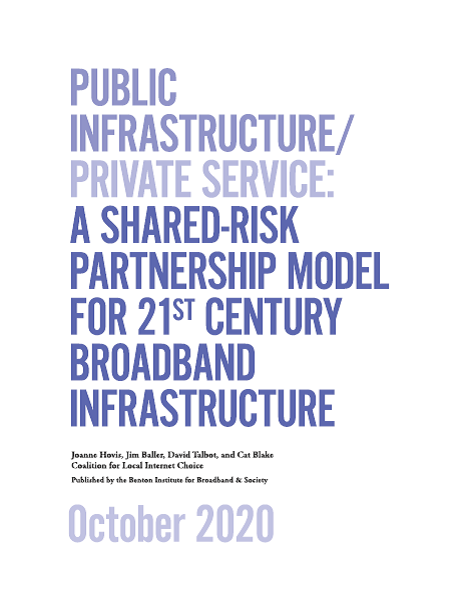Public Infrastructure/Private Service: A Shared-Risk Partnership Model for 21st Century Broadband Infrastructure
This report was written by Joanne Hovis, Jim Baller, David Talbot, and Cat Blake
How can America’s communities secure the benefits of fiber-optic infrastructure?
One answer is that local governments need not accept a binary option of waiting for the private sector to solve the problem—which the private sector already would have done if it made business sense—or taking on the challenge entirely as a public enterprise. Rather, public-private collaboration can disrupt this binary and give communities options. Indeed, in recent months and years, a range of collaborative public-private models—involving various levels of risk-sharing—have emerged and proved worthy of emulation.
In some of the most promising of these partnerships, the public entity funds, builds, and owns the underlying communications infrastructure and the private entity does the rest: It provides the electronics and service over that infrastructure and deals with the complexities of running a broadband business. This Public Infrastructure/Private Service model puts the locality in the business of building infrastructure, a business cities and counties know well after a century of building roads, bridges, and utilities. The model leaves to the private sector most aspects of network operations, equipment provisioning, and service delivery.
The Public Infrastructure/Private Service model leverages the best capabilities of the public and private sectors. In this model, cities and counties do what they’ve always done: finance and build basic infrastructure, manage rights-of-way, and maintain that infrastructure over long periods of time—ensuring that the entire community benefits from the infrastructure and that government functions can happen over fiber that connects municipal offices, libraries, public safety agencies, and schools.
This emerging model presents a scalable option for communities that lack the expertise or interest to operate communications networks or act as internet service providers themselves but want to own and control the core communications assets in their community as a means of securing the benefits of the broadband internet.


